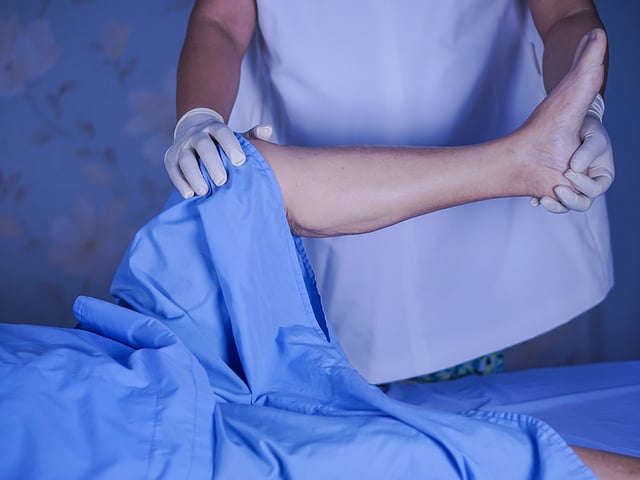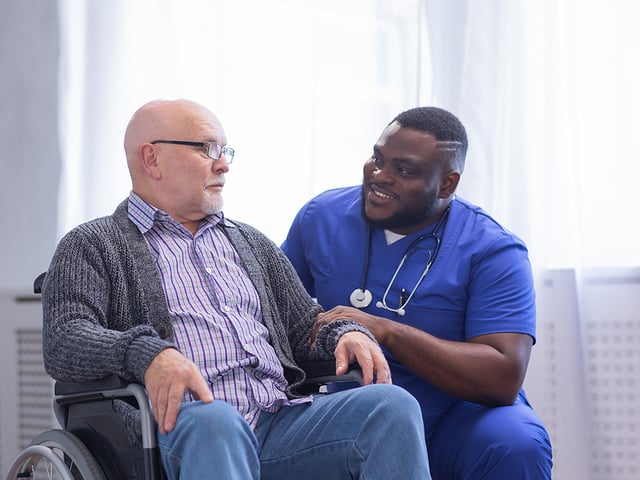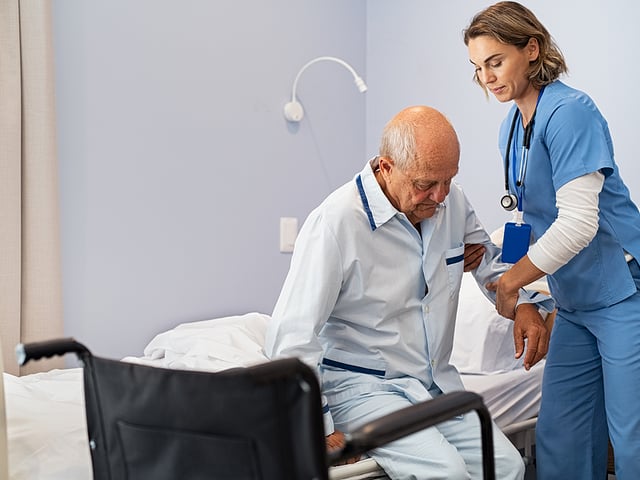
CNA Skills: Positioning, Transferring, and Moving Patients
As healthcare providers, one of our primary responsibilities is to ensure the safety and comfort of our patients during their stay in a healthcare facility. Patient positioning, transferring, and movement are crucial CNA skills that play a significant role in providing quality care. Whether it’s adjusting a patient’s position for optimal breathing or transferring them from a bed to a chair, executing these tasks with care and precision is essential to avoid potential injuries and promote patient well-being.
Before You Begin: The Opening Procedure
Before performing any patient movement tasks, it is essential to follow the Opening Procedure. This ensures that you establish proper communication with the patient, maintain hygiene standards, and create a respectful and comfortable environment. The Opening Procedure includes:
-
Washing Your Hands: Proper hand hygiene is the foundation of infection prevention. Wash your hands thoroughly with soap and water or use hand sanitizer before starting the procedure.
-
Donning Gloves: Wear disposable gloves to protect yourself and the patient from potential infections and to maintain a sterile environment.
-
Greeting the Patient by Name: Address the patient by their name to establish a personal connection and show empathy.
-
Introducing Yourself by Name: Clearly state your name and role in the healthcare team to build trust with the patient.
-
Explaining the Procedure: Inform the patient about the task you will be performing, step by step, and explain its purpose. This helps reduce anxiety and ensures informed consent.
-
Providing Privacy: Ensure the patient’s privacy by pulling the privacy curtain or closing the door, if applicable, during the procedure.
When You’re Finished: The Closing Procedure
Just as the Opening Procedure is crucial, so is the Closing Procedure. After completing the patient movement task, follow these steps to ensure the patient’s safety and comfort:
-
Check Patient’s Body Alignment: Verify that the patient’s body is properly aligned to avoid unnecessary strain on muscles and joints.
-
Ensure the Bed is in the Lowest Position: Lower the bed to the lowest position to prevent falls and make it easier for the patient to get in and out of bed.
-
Ensure the Bed Rails are Raised: Raise the bed rails to provide additional support and reduce the risk of falls during rest.
-
Ensure Call Bell Accessibility: Confirm that the call bell is within the patient’s reach so they can call for assistance if needed.
-
Remove Gloves: Safely remove and dispose of the gloves to prevent cross-contamination.
-
Perform Hand Hygiene: Wash your hands thoroughly again to maintain proper hygiene after completing the procedure.
The Skills: Step-by-Step Guide
Position in Fowler’s Position
Fowler’s Position is a commonly used patient positioning technique, particularly for patients experiencing difficulty breathing. It allows the chest to expand and the abdominal muscles to relax. Here’s how to perform
Fowler’s Position:
-
Explain to the Patient: Inform the patient about Fowler’s Position and the benefits it offers, and ask for their preference whenever possible.
-
Adjust the Bed: Raise the head of the bed to an angle between 30 degrees (low Fowler’s) to 90 degrees (high Fowler’s) based on the patient’s comfort and medical condition.
Position in Lateral Position
The lateral position involves placing the patient on their side, often done to assist in other tasks or prevent bed sores for immobile patients. Follow these steps to safely position a patient in the lateral position:
-
Ensure Proper Body Mechanics: Adjust the bed height to avoid excessive bending and maintain proper body alignment during the procedure.
-
Check Patient’s Face: Ensure the patient’s face is not obstructed by the pillow during the positioning process.
-
Move the Patient: Gently and carefully move the patient to the opposite side of the bed while maintaining their alignment.
-
Use Supporting Devices: Place pillows beneath the patient’s back, head, and between legs to provide support and comfort.
-
Log Roll the Patient: With the bed rail raised on the side you’ll be turning them, perform a log roll using a sheet or by placing your hands on the patient’s shoulders and hips.
-
Verify Alignment: Check the patient’s alignment after positioning them on their side.
Transfer from Bed to Chair Using a Gait Belt
Transferring a patient from a bed to a chair often requires the use of a gait belt to ensure stability and safety. Follow these steps to execute a smooth transfer:
-
Prepare the Wheelchair: Place the wheelchair beside the bed, lock the wheels of both the bed and the wheelchair, and ensure the foot pedals are not obstructing the transfer.
-
Assist the Patient to Sit Up: Lower the bed, raise the head of the bed, and help the patient sit up. Check if the patient feels dizzy or lightheaded.
-
Secure the Gait Belt: Place a gait belt around the patient’s waist, allowing space for two fingers between the belt and the patient. Ensure the patient wears anti-skid footwear.
-
Assist the Patient to Stand: Ask the patient to place their feet on the floor, hold the gait belt firmly on both sides, place your knee between their knees, and count to three to help the patient stand.
-
Pivot to the Wheelchair: Take small steps and pivot with the patient until they are facing the wheelchair.
-
Lower the Patient: Gently lower the patient into the chair and remove the gait belt carefully.
-
Adjust the Chair: Ensure the foot pedals are comfortable for the patient, and provide a blanket if needed.
Assist the Patient in Walking Using a Gait Belt
Assisting a patient in walking with a gait belt requires careful support and encouragement. Follow these steps to help the patient ambulate safely:
-
Prepare the Patient: Assist the patient in sitting up and standing, using the same steps as in transferring from bed to chair.
-
Maintain Upward Tension: Stand close behind and to the side of the patient while holding the gait belt with upward tension to provide support.
-
Encourage Proper Walking: Encourage the patient to walk properly, placing their heel on the floor first and avoiding shuffling or sliding.
-
Monitor the Patient: Keep a close eye on the patient’s comfort level and any signs of dizziness or pain.
-
Return to Seated Position: Walk the necessary distance or as much as the patient can tolerate, and then assist them back to a seated position on the chair or bed.
-
Remove the Gait Belt: Carefully remove the gait belt, making sure not to cause friction or discomfort to the patient.
Make an Occupied Bed
At times, it may be necessary to make the patient’s bed while they are still in it. Here’s a step-by-step guide to ensuring a smooth process:
-
Prepare Clean Linens: Place clean linens on a clean chair or surface near the bed.
-
Position the Patient: Utilize the lateral positioning technique to help the patient onto one side while keeping them covered with a blanket.
-
Loosen Dirty Linens: Loosen the dirty linens and roll them inward toward the patient, taking care not to contaminate yourself or the surrounding area.
-
Place Clean Linens: Spread the clean linens on the unmade side of the bed, securing them on the half side while rolling the other half underneath the dirty linens.
-
Roll the Patient: Gently roll the patient onto their other side, away from the soiled linens. Dispose of the dirty linens in the appropriate receptacle, and if necessary, change gloves and perform hand hygiene.
-
Secure Clean Linens: Unroll the clean linens and ensure there are no wrinkles beneath the patient. Smooth the sheets and tuck them in securely to provide comfort and support.
-
Center the Patient: Position the patient comfortably in the bed, making sure they are well-supported and their head is resting comfortably on the pillow.
-
Add a Top Sheet and Blanket: Place a clean top sheet over the patient and cover them with a blanket, making sure to miter the corners at the foot of the bed to provide a neat and tidy appearance.
Passive Range of Motion - Upper Body
Performing passive range of motion exercises on the patient’s upper body can help mobilize their shoulders, elbows, wrists, and fingers. Follow these steps for a safe and effective upper body range of motion exercise:
-
Bed Setup: Adjust the bed to an appropriate height to avoid straining your back during the exercise.
-
Gentle Exercise: Safely and gently exercise each joint in its natural range of motion. Avoid forcing or overstretching the joints, and ask the patient if they experience any discomfort.
-
Exercise Patterns: Use appropriate patterns for each joint, including flexion (bending), extension (straightening), abduction (moving away from the body), adduction (moving toward the body), and rotation.
Passive Range of Motion - Lower Body
Passive range of motion exercises for the lower body help mobilize the patient’s hips, knees, ankles, and toes. Follow the same principles as with upper body exercises:
-
Proper Bed Height: Adjust the bed to a suitable height to ensure proper body mechanics during the exercise.
-
Gentle Movements: Perform each joint movement gently and within the natural range of motion, respecting the patient’s comfort and limitations.
-
Exercise Patterns: Use the appropriate patterns for each joint, including flexion, extension, abduction, adduction, and rotation.
Remember to communicate with the patient throughout the exercises, ensuring they are comfortable and not experiencing any pain or discomfort.
Importance of Safe Patient Movement
Patient movement is an essential aspect of patient care, as it impacts their comfort, well-being, and recovery process. Whether patients are bedridden, recovering from surgery, or dealing with mobility issues, safely positioning and transferring them is critical to preventing injuries such as falls, pressure ulcers, and musculoskeletal strain.
As healthcare providers, it is our responsibility to:
-
Prioritize Patient Safety: Always prioritize the safety and comfort of your patients during movement procedures. Communicate clearly with them and ensure they understand the process.
-
Use Proper Body Mechanics: Follow proper body mechanics and lifting techniques to protect yourself from potential injuries while moving patients.
-
Avoid Rushing: Take your time during patient movement tasks to ensure you perform them correctly and minimize the risk of accidents.
-
Involve the Patient: When possible, involve the patient in decision-making regarding their positioning and transfers, as it enhances their sense of autonomy and dignity.
-
Adapt to Individual Needs: Every patient is unique, and their mobility and comfort levels vary. Tailor your approach to suit the specific needs and limitations of each patient.
-
Monitor Patient Response: Continuously assess how patients respond to movements and adjust your approach accordingly to avoid discomfort or injury.
By mastering the skills of safe patient movement, healthcare providers contribute significantly to the overall well-being and positive outcomes of their patients.
In conclusion, patient positioning, transferring, and movement are fundamental skills in healthcare that require careful attention and precision. Following the Opening and Closing Procedures, as well as the step-by-step guidelines for each skill, ensures safe and effective patient care. With compassion, communication, and a focus on patient safety, healthcare providers play a crucial role in promoting the comfort and recovery of their patients.
Keep Reading

Certified Nursing Assistant Exam Blog
How Long Does it Take to Become a CNA?
As a profession on the frontline of healthcare, Certified Nursing Assis…

Certified Nursing Assistant Exam Blog
How to Do Well on the CNA Skills Test
Over 1.3 million nursing assistants work in our healthcare system today…

Certified Nursing Assistant Exam Blog
What Does a Nursing Assistant (CNA) Do?
Are you interested in exploring medical careers? The healthcare industr…